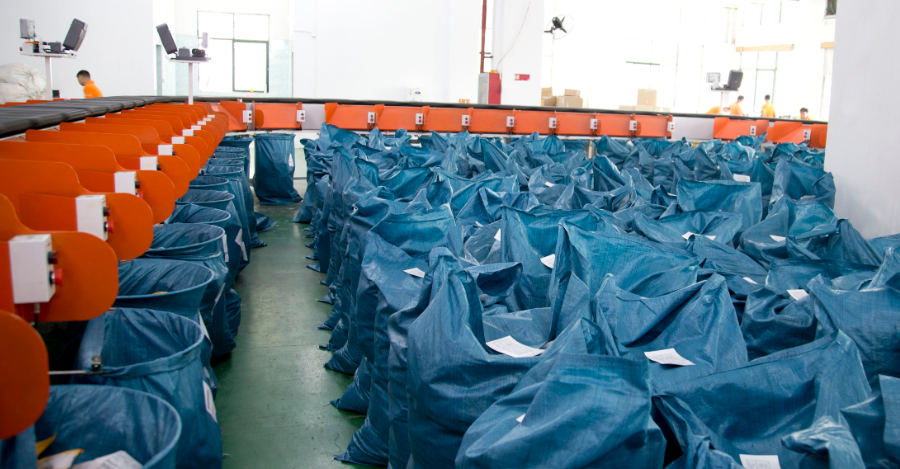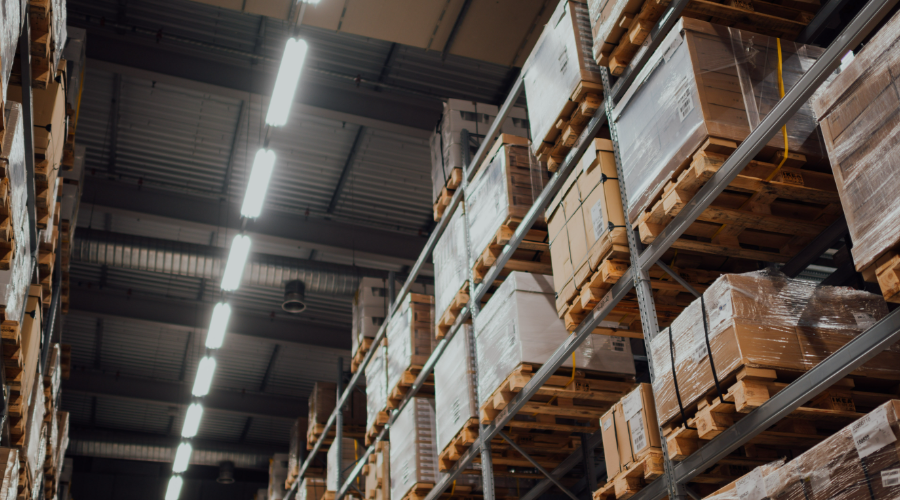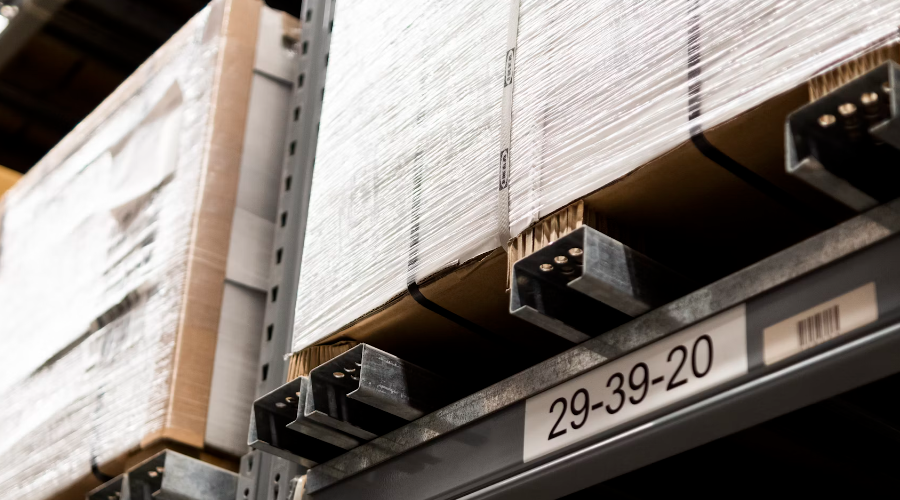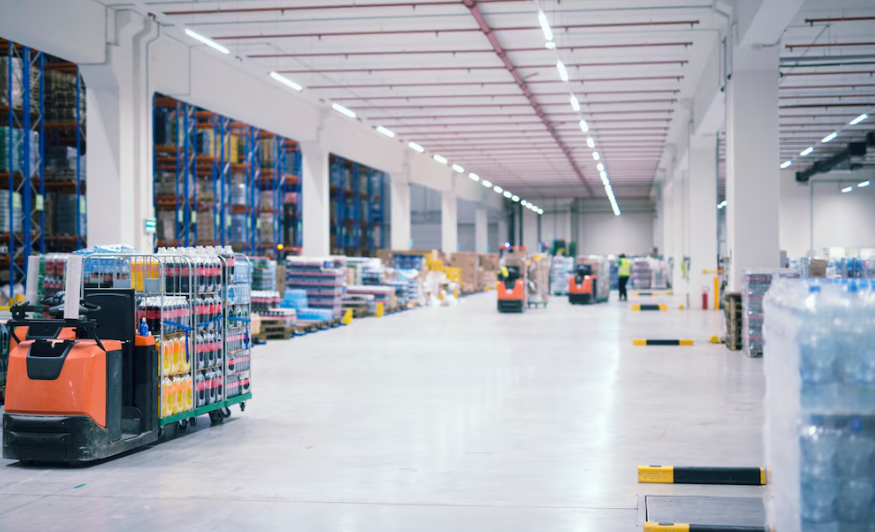Table of Contents
Get Custom eCommerce Fulfillment Service
Book a Meeting
How Supply Chain Redundancy Protects E-Commerce Businesses from Revenue Loss
Time: Nov 14,2025 Author: SFC Source: www.sendfromchina.com
Global e-commerce has never been more dynamic — or more fragile. A factory shutdown in Shenzhen, a container jam at the Port of Los Angeles, or a carrier strike in Europe can derail an entire sales quarter overnight. For online brands that rely on steady inventory flow and fast fulfilment, even a brief disruption can translate into thousands in lost revenue and damaged customer trust.

That’s where supply chain redundancy comes in. Rather than depending on a single supplier, warehouse, or route, redundancy builds multiple pathways into your logistics network — giving your business the flexibility to adapt when the unexpected happens.
In this guide, we break down everything e-commerce brands need to know about building supply chain redundancy: what it is, why it matters, and how to implement it effectively. You’ll learn practical strategies to strengthen your sourcing, shipping, and fulfilment network — so your brand stays resilient, profitable, and ready for growth no matter what the global market throws your way.
1. What is Supply Chain Redundancy?
At its core, supply chain redundancy means building intentional alternatives into your logistics, sourcing and distribution network so that when one link falters, your business doesn’t grind to a halt. As one industry guide puts it, redundancy is “the strategic practice of building multiple options and backup systems into your logistics network.”
In simpler terms: instead of relying on a single supplier, a single warehouse location or a single transport route — you build in backups. These backups might not always be active, but they are ready to go when needed. That can include:
Secondary suppliers in a different country or region.
Buffer stock or alternate inventory staging.
Alternate transport lanes (sea, air, rail) or warehouse partners.
Redundant logistics partners or fulfillment centers.
It’s important to distinguish redundancy from resilience. While the two are closely related, redundancy is about the backup capacity/option, whereas resilience refers to the ability to adapt, recover and continue operations. As one source notes: “Redundancy creates the foundation that enables resilience.”
2. Why Supply Chain Redundancy Matters for E-Commerce Brands
Why should an e-commerce brand care about redundancy? The reasons are both obvious and frequently underestimated.

Customer expectations and risk exposure
E-commerce brands face high expectations for speed, reliability and inventory availability. When an order is delayed or a product is out of stock, customers often jump ship (to a competitor) or leave negative reviews — directly damaging revenue and brand reputation.
Without redundancy, a single disruption (factory shutdown, shipping bottleneck, port closure, carrier strike) can ripple through the supply chain and cause stock-outs, missed delivery windows and frustrated customers. For example, one study of supply-chain disruptions found that “without redundancy, a single point of failure can disrupt the entire supply chain … leading to production halts, increased costs, and loss of customer trust.”
Global complexity means more risk
Most e-commerce brands sourcing from China or shipping internationally are exposed to multiple risk vectors: tariffs, geopolitical tensions, natural disasters, port congestion, labour shortages, transport mode constraints, cyber incidents. According to one article: “In 2025, nearly seven in ten supply chain professionals surveyed said they expected their risks to escalate.”
When you rely on a single factory in China, or one shipping lane, or one warehouse partner for a key SKU — you are vulnerable.
Revenue safeguard and competitive advantage
When disruption happens, the brands with redundant networks can continue fulfilling orders, thereby safeguarding revenue, maintaining customer trust and gaining an edge over competitors who falter. In effect, redundancy functions like an insurance policy for your e-commerce operations. This is especially important for fast-growing brands where downtime means lost momentum.
3. Core Strategies to Build Supply Chain Redundancy
To make redundancy real (and not just a buzzword), e-commerce brands can deploy a set of foundational strategies. Here are several core ones:

Diversify Suppliers & Multi-Sourcing
Rather than relying on one supplier for a component or finished product, seek at least two (or more) qualified suppliers — ideally in different regions (e.g., China + Vietnam). This mitigates the risk associated with supply disruption in one location.
Inventory Buffer / Safety Stock
While lean, just-in-time inventory models are attractive for cost savings, they leave you exposed when lead times lengthen. Maintaining a buffer inventory of key SKUs or components gives you breathing room during disruptions.
Alternate Transportation Routes & Modes
Don’t put all your freight through one port, or rely solely on one carrier or shipping mode. Having sea + air options, rail where feasible, and alternative shipping lanes helps when e.g., a port is congested or a carrier delays.
Warehouse/Distribution Redundancy
Instead of one fulfillment center, consider multiple warehouses (even if smaller) in different geographic zones. This allows you to redirect orders if one warehouse faces disruption, and also supports shorter delivery windows.
Visibility, Monitoring & Forecasting
Redundancy is only useful if you can detect when things go awry and act quickly. Invest in digital tools (dashboards, supplier portals, shipment tracking, alerts) so you can spot when a supplier misses a milestone, transit is delayed, or inventory is low. According to one guide: visibility is a key pillar of shock-proof e-commerce operations.
Risk Assessment & Contingency Planning
Map your supply chain (tier-1, tier-2) to identify single points of failure (e.g., a sole supplier of a part, a route through a high-risk zone). Use scenario planning: what happens if X fails? What are the backup options? Then put trigger-points and escalation plans in place.
4. Advanced Redundancy Strategies for Scaling Ecommerce Brands
Once a brand has matured and volume is growing, you can layer on more advanced redundancy strategies — greater sophistication = more competitive advantage.

Regional Manufacturing or Dual-Sourcing Strategy
Instead of sourcing everything from one country, consider partially manufacturing or assembling in a second region (near-shore or alternate continent). That way you hedge against country-level risk. This is especially relevant for brands sourcing from China but wanting alternative capacity elsewhere.Dynamic Inventory Allocation & Distributed Fulfilment
When your brand is shipping globally, use inventory intelligence to position stock closer to end-markets (e.g., Europe, US, Australia) so if one region’s logistics face disruption, you have alternatives. Also consider drop-shipping from alternate inventory pools or even cross-border fulfillment. Scaling brands may split inventory across multiple fulfillment networks. Advanced allocation algorithms (as seen in major e-commerce operations) can improve fulfillment rates and reduce lost sales.Alternative Logistics Partnerships & Carrier Redundancy
Develop relationships with multiple 3PLs, freight forwarders and carriers. Negotiate contingency contracts so if your primary carrier capacity is constrained (e.g., peak season, trade war), you can flip to backup lanes quickly. Cultivate strong partnerships with logistics providers who can scale with you. As one analysis notes: proactive collaboration with 3PLs builds the edge when capacity crunches hit.
Technology-Driven Predictive & Adaptive Supply Chain
Use data analytics, machine-learning, scenario modelling and digital twin approaches to forecast disruptions, simulate alternative supply-chain flows, and trigger automatic fallback options. For example, automated ML frameworks are being developed to detect material backorders or supply failures. In practice: real-time alerting when lead-time deviation exceeds threshold → auto-trigger switch to alternate supplier or carrier. This level of automation distinguishes scaling brands.Modular or Flexible Manufacturing/Packaging Design
Design your products (or packaging) to be flexible or modular, so that if one part of the manufacturing chain is disrupted, you can shift part of production elsewhere. Also, maintain alternate packaging suppliers or secondary fulfillment moulding lines so that disruptions in one vendor don’t stop the flow entirely. Lean & Six Sigma methodologies (used by larger e-commerce operators) are relevant here to reduce process variation and build flexible manufacturing.
Customer-Facing Fulfilment Alternatives
For scaling brands especially, consider offering customers optional fulfillment routes: e.g., “ship from alternate regional warehouse”, “expedite via air if sea route delayed”, or “direct to consumer from supplier warehouse”. This adds complexity but gives brands options when disruptions tighten.
5. Measuring the Return on Redundancy
Redundancy is often perceived as “extra cost” — extra inventory, extra suppliers, extra logistics lanes — so measuring its return is critical to justify the investment and optimise decisions.

Key Metrics to Monitor
Fulfillment Rate / Order Cycle Time – Track your ability to ship orders on-time, in full. When redundancy is working, these rates should be resilient even during disruption.
Stock-out Frequency / Lost Sales Episodes – How often do you face out-of-stock events or cancelled orders due to supply chain issues? Redundancy should reduce these.
Cost of Disruption – Estimate the revenue lost, margin erosion, and brand impact when a supply chain failure occurs. Then compare to the cost of maintaining redundant capacity (e.g., buffer inventory, alternate supplier premiums).
Supplier Lead-Time Variability – Monitor lead time fluctuations. A well-redundant network should show lower lead-time volatility.
Customer Satisfaction / Repeat Purchase Rate – Disruptions harm brand trust; redundancy supports consistent service. Measuring how service levels influence repeat business gives indirect ROI.
Inventory Turn & Carrying Cost – Having buffer stock adds cost; this needs to be measured and balanced.
Utilisation of Backup Options – Track how often you switch to secondary suppliers/warehouses/routes. If you rarely use them, you may be over-invested; if you need to use them and it saves you, that’s justification.
Calculating ROI Example (simplified)
Suppose a disruption occurs that would have caused $500,000 of lost sales (and lost margin) for your e-commerce brand.
You invest in redundancy (alternate supplier contract + buffer inventory) at a cost of $50,000 per year.
In the event the disruption is averted (or mitigated) thanks to redundancy, your net “saving” = $500,000 − $50,000 = $450,000. Tracking these events over time, you can compute the payback period and return on redundancy investment.Balanced Approach
Redundancy doesn’t mean unlimited backups everywhere (that would be prohibitively expensive). The key is to apply it where risk and cost of disruption are highest (critical SKUs, high-value customers, peak seasons). Use risk mapping and scenario modelling to prioritise redundancy. As one strategy guide emphasises: “no single supplier should produce more than 30-40% of any critical SKU” to avoid over-dependence.
6. Building Redundancy with SendFromChina: How We Help
At SendFromChina, we specialise in third-party logistics (3PL) services based in China, tailored to e-commerce brands seeking to build reliable, resilient supply chains. Here’s how we support your redundancy strategy:
Flexible Freight & Shipping Options
Our logistics solutions include sea-freight consolidation, air-freight expedited shipping and alternative routing (rail/road). We maintain relationships with multiple carriers across corridors, giving you built-in fallback options when shipping lanes are constrained or rates spike.
China-Warehouse & Global Fulfilment Integration
We offer warehousing in China for buffer inventory, plus integration with global fulfillment centers. This allows you to maintain strategic stock inside China (for replenishment) and outside China (for local fulfilment). If one region’s warehouse is impacted (e.g., due to natural disaster or lockdown), we can redirect from another location.
Real-Time Visibility & Reporting
SendFromChina provides dashboard reporting of inbound shipments, inventory flows, lead-time tracking and conditional alerts. This visibility enables you to spot early signs of disruption and activate your redundancy plan in time.
Scalable Redundancy Planning for Growth
For scaling e-commerce brands, we can help you build contingency frameworks: for example, what happens if the China-Europe sea-route is delayed? Or if air-freight demand surges in Q4? We can simulate and implement fallback plans (alternate port, alternate carrier) in advance, so you’re not scrambling under pressure.
Cost-Effective Redundancy Design
We work with you to evaluate the balance between redundancy and cost. Buffer stock levels, alternate carrier premiums, supplier backups — we help you model these costs versus estimated disruption risk, in order to design a sustainable redundancy strategy.
7. Conclusion
In an e-commerce world defined by rapid changes, global complexity and high customer expectations, supply chain redundancy is no longer optional. It is a strategic imperative. When you build redundancy — via diversified suppliers, alternate routes, buffer inventory, visibility tools and contingency planning — you safeguard your revenue, customer trust and brand reputation.
8. FAQs
Q1. What is the difference between redundancy and resilience in supply chain?
A1. Redundancy means having backup options (such as extra suppliers, alternate routes, buffer inventory). Resilience is the overall ability to recover and adapt when disruption happens. Redundancy is a building block of resilience.
Q2. Does redundancy always mean higher cost?
A2. Yes, some additional cost is usually involved (extra inventory, alternate suppliers, contingency shipping). But the cost should be weighed against the potential revenue loss or brand damage of a disruption — and the right redundancy strategy can pay for itself.
Q3. How can small e-commerce brands implement redundancy?
A3. Start with the most critical SKUs or highest risk areas. Use a second supplier, maintain buffer inventory for key items, and plan an alternate shipping route. You don’t need full redundancy everywhere immediately — scale it as you grow.
Q4. How often should an e-commerce brand review its redundancy plan?
A4. At least annually, but also whenever there’s a major change: new supplier, new market, new logistics partner, or after a disruption event. Keep scenario-planning current.
Q5. What are some signs my supply chain lacks redundancy?
A5. Frequent stock-outs or late shipments, heavy reliance on a single factory or logistics lane, little visibility into lead-times, and no alternate plan when one supplier or carrier fails.
 Post Views:11
Post Views:11
Copyright statement: The copyright of this article belongs to the original author. Please indicate the source for reprinting.
Previous Post
Next Post
The Ultimate Guide to USPS Media Mail: Eligibility, Rates & Delivery Times
TAGS
Hot Research
Recent News
- Third Party Logistics Definition, Process, and Advantages
- What Is Ecommerce Fulfillment? The Definition, Process, and Benefits
- Where Does Shein Ship From
- How Supply Chain Redundancy Protects E-Commerce Businesses from Revenue Loss
- The Ultimate Guide to USPS Media Mail: Eligibility, Rates & Delivery Times
Get Custom eCommerce Fulfillment Service
Book a Meeting
Get a Custom China Fulfillment Solution with FREE Storage for 30 Days
 Want to know about our services, fees or receive a custom quote?
Want to know about our services, fees or receive a custom quote?
 Please fill out the form on the right and we will get back to you within a business day.
Please fill out the form on the right and we will get back to you within a business day.
 The more information you provide, the better our initial response
will be.
The more information you provide, the better our initial response
will be.





 TAGS:
TAGS: